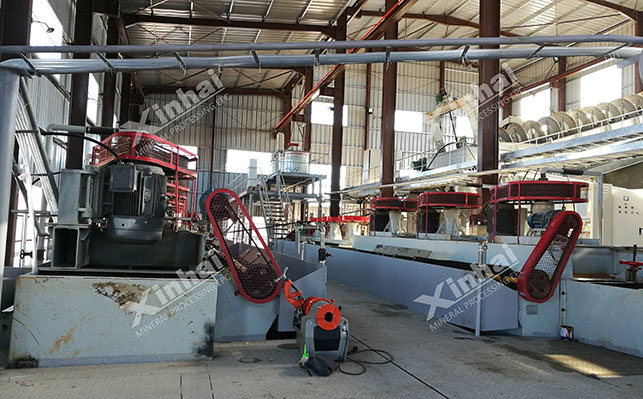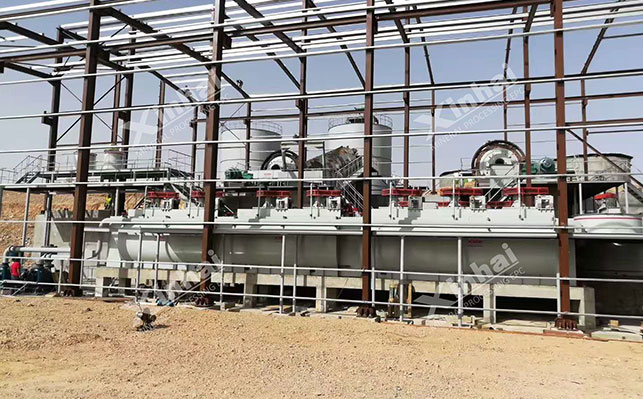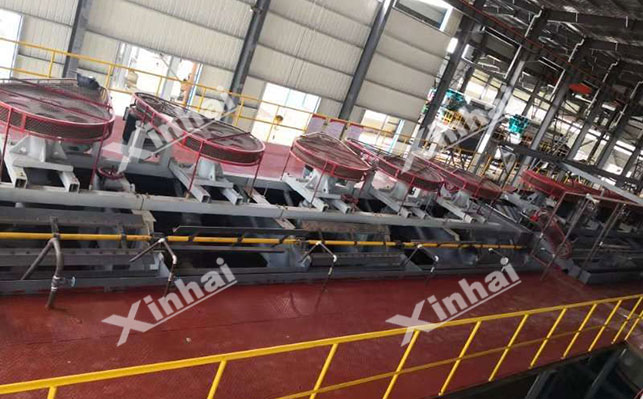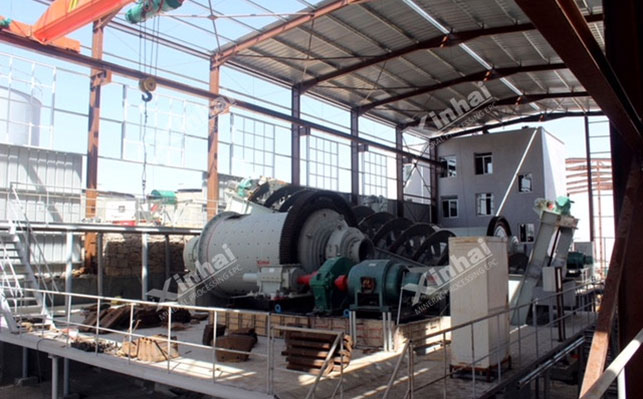
15311826613
Click to add WeChatAssociated silver ore refers to silver elements coexisting with other metal minerals in the same ore deposit, not in the form of independent silver ore. It often exists semi-existing in lead-zinc and copper mines, and some also exist in tin, gold and polymetallic mines. The silver grade of associated silver ore is less than 100g/t, and it is a silver ore that is comprehensively recovered along with the mining of the main ore products. Flotation is one of the commonly used beneficiation methods for semi-raw silver ore. This article will introduce the semi-raw silver flotation method and process.

Silver ore flotation is to change the surface properties of the mineral by adding flotation agents, so that the silver minerals attached to the bubbles float up, and separate from the gangue minerals, which plays a role in enriching silver minerals and improving the silver grade. It is suitable for selecting associated silver ores with different physical and chemical properties on the surface of various silver minerals and gangue minerals. Commonly used flotation methods for semi-raw silver ores are mainly priority flotation, mixed flotation, equal flotation and flotation column flotation.
Preferential flotation of semi-crude silver is to flot and recover the target minerals in sequence according to the difference in floatability of different minerals in the ore. The mineral with the best floatability is first floated out, and then other minerals are floated out to separate the silver minerals from other associated minerals. When the floatability difference between silver minerals and other minerals in the associated silver ore is large, and the grade of silver minerals is high and the embedded particle size is coarse, the preferential flotation method is more suitable.

Mixed flotation of semi-crude silver is to float out multiple useful minerals in the ore together to obtain a mixed concentrate, and then separate the mixed concentrate. By adding appropriate collectors and frothers, silver minerals and other useful minerals are attached to the bubbles at the same time and float to the surface together. It is suitable for the situation where the floatability of silver minerals and other useful minerals in the associated silver ore is similar, and the embedded relationship is complex, and it is difficult to separate them by a single flotation method.
Semi-crude silver and other flotation flotation is to divide the minerals with similar flotability into several groups according to the difference in the flotability of the minerals, and then flotate them in sequence. First float out a group of minerals with better flotability, and then float out another group of minerals with poor flotability. In the flotation process of each group, try to make the silver mineral float out with other minerals in the group. It is more suitable for the situation where there are many types of minerals in the associated silver ore and the difference in flotability is complex (associated silver ore containing a variety of sulfide minerals and oxide minerals).

The flotation of semi-crude silver flotation column uses the special structure inside the flotation column to make the ore pulp move countercurrently in the column, and the bubbles and ore particles are fully in contact during the rising and falling process to achieve the flotation of minerals. Compared with traditional flotation machines, flotation columns have higher sorting efficiency and better enrichment effect. It is mostly suitable for processing fine-grained associated silver ores, and has a good effect on recovering fine-grained silver minerals.
The flotation process of silver ore mainly covers: crushing, grinding, flotation and dehydration.
Crushing: A two-stage crushing process is often used. The first stage is mostly coarse crushing with a jaw crusher to crush large pieces of ore into 100-200mm blocks; the middle or fine crushing is mostly done with a cone crusher or impact crusher, and the medium crushing particle size range is between 30-50mm; the fine crushing particle size should reach between 10-20mm to provide suitable feed for subsequent grinding operations.
Grinding: There are one-stage grinding and two-stage grinding processes. The first stage usually uses a grate ball mill or rod mill to complete the grinding operation, so that the ore particle size is ground to about 0.1-0.3mm, and the useful minerals and gangue minerals are realized; the second stage grinding is difficult to fully dissociate the silver minerals from other minerals due to some embedded associated silver ores with finer particle sizes, and a continuous fine grinding process is required. The second stage grinding generally uses an overflow ball mill or rod mill, which can further grind the ore to about 0.074-0.1mm.

Flotation: Because the associated silver ore needs to take into account the recovery of the main metal, priority flotation or mixed flotation is often used. For example, for copper-lead-zinc polymetallic associated silver ores, first use xanthate collectors to float copper and silver minerals, then use ethyl thiocyanate to float lead minerals, and then use copper sulfate to activate and float zinc minerals. The flotation reagents and process parameters are adjusted according to the difference in mineral floatability at different stages.
Dehydration of concentrate: The purpose is to reduce the water content of silver concentrate. Commonly used equipment is concentrators, filter presses, etc. Among them, the concentrator uses gravity to precipitate the solid particles in the silver concentrate, realizes the initial separation of solid and liquid, and increases the pulp concentration from about 20%-30% to 40%-60%; the filter press squeezes the filter cake through mechanical pressure to further reduce the water content to 10%-15%.
The beneficiation methods for semi-raw silver include not only flotation, but also other methods such as gravity separation and cyanidation. In practical applications, the flotation method of associated silver ore usually needs to be comprehensively considered and experimentally studied based on the properties of the ore, mineral composition, embedding characteristics and other factors, and select the appropriate flotation process and reagent system to achieve ideal recovery efficiency.